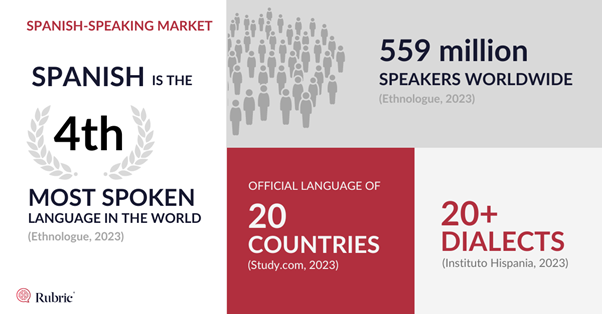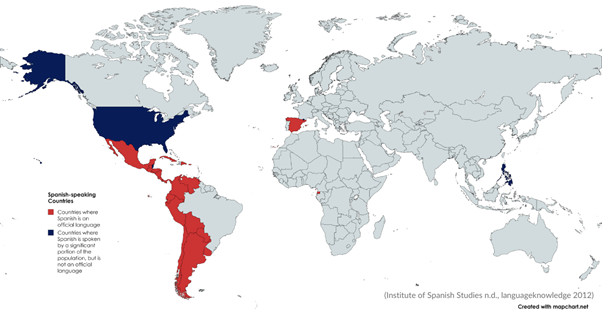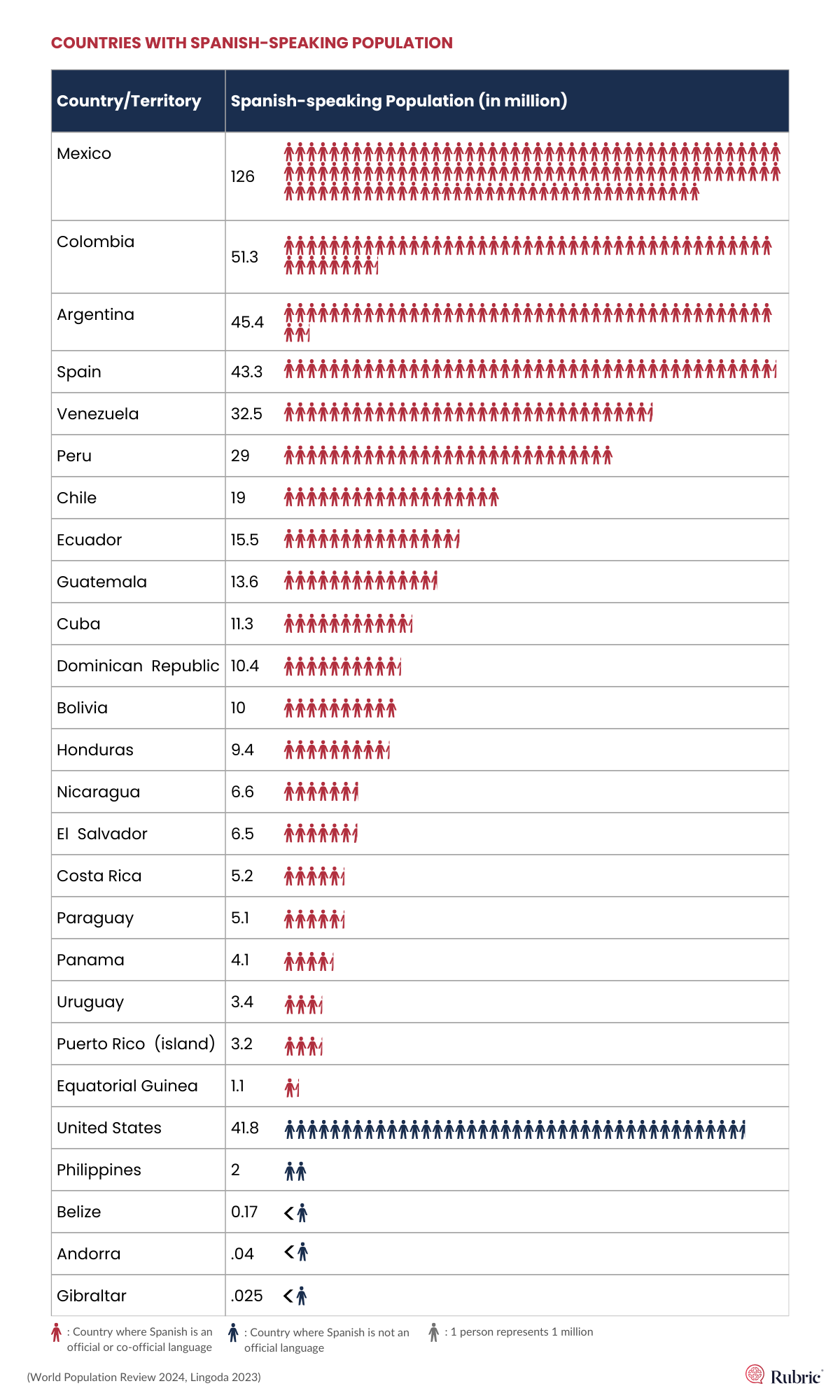
Localizing into Spanish makes sense
Spanish is the 4th most spoken language in the world with English, Mandarin Chinese, and Hindi taking the podium places.

Given these numbers it’s no surprise that Spanish is often one of the first languages global companies localize into.
But Spanish is complicated—Spanish speakers aren’t limited to Spain or Mexico.

There are no fewer than 20 countries and territories in which Spanish is an official language. Then there are the countries in which it isn’t an official language—there are over 40 million Spanish speakers in the United States alone!

But which Spanish?
Due to regional and cultural influences, Spanish spoken in one region can be quite different from that spoken in another. Dialects differ in grammar, pronunciation and vocabulary.
There are over 20 recognised Spanish dialects and 29 internationally recognized variants of Spanish. But this only tells part of the picture… it’s thought that Mexico alone has 10 different variations of Spanish spoken in the region.

As well as not being a single homogenous language, Spanish doesn’t refer to a single culture either.
As a global business, how can you reach your Spanish audience?
Know your audience
To get Spanish localization right it’s vital to know your target audience.
If your product only retails in America it makes sense to localize into a US variant of Spanish. And US Spanish is big business given Spanish is the second most spoken language in the US. Plus, Spanish speakers are expected to make up 20% of the population by 2030. US Spanish is largely based on Mexican Spanish but uses more loan words (particularly in specialized industries), variations in terminology, and normally uses US English rules for numbers.
But if 95% of your Spanish-speaking workforce is in Chile with the other 5% split between Mexico and Argentina, it would make sense to localize only into Chilean Spanish given the numbers.
But what if, like some of Rubric’s clients, your target audience is truly global and you want to talk directly to Spanish speakers around the world?
What about Universal Spanish?
“Universal Spanish” is used to refer to a single variant of Spanish that can be understood by Spanish speakers everywhere.
So as a global business, wouldn’t you just always opt for Universal Spanish, casting your net as widely as possible?
The thing is, “Universal Spanish” is something of a myth. Whilst there might be a single version that can more or less be understood, it will still need to be broadly based on one of the two major groups of variants—the Spanish spoken in the Americas (Latin Spanish) or that spoken in Spain (Iberian Spanish). It’s extremely unlikely that at the very least there won’t be terminology or idiom that is specific to one or the other.
Even the most neutral version of sterile Spanish with all colloquialisms, contentious terminology, geo-specific references and humor removed, will feel foreign or alien to some (or many).
For some global businesses this trade-off is worth making. Localizing into more than one variety of Spanish requires more money and more effort and resources. The ROI and potential market size are key considerations, as is your industry sector and target audience.
For other businesses brand messaging and personalization are key. If your business wants to truly connect with people—whether it’s to advertise your product or service, or to educate, inform, or advise—it’s probably key that your audience feels your content is for them. If you were to utilize “Universal Spanish” you’re likely to lose the personal touch. And instead of connecting with a global Spanish-speaking audience you may end up alienating some of them.
Targeted variations
If your strategy is to localize into more than one variant of Spanish you can either handle each variant as an entirely separate language. Whilst this is the most costly option it offers the most targeted approach and as such is the chosen approach for a number of Rubric’s clients.
There are other options available to reduce effort and cost however. At Rubric we have partnered with some of our clients to develop a more bespoke approach. Often one variant of Spanish is a higher priority than others due to sales potential. We translate into this variant as normal, and then edit that version for the other variants according to agreed criteria such as style changes and terminology differences. This targeted approach offers a lower cost alternative to deliver market-specific content.
Multimedia localization: audio and video localization
Written content has its complexities, but content containing audio or video brings a whole set of other challenges. There isn’t just terminology, idioms and style to consider—now there are faces, voices with accents and geo-specific imagery.
Read more in our blog about localizing video for global markets.
Where to get further help on Spanish translation and localization
With over 30 years of experience our team of experts can help you design a localization strategy for the Spanish-speaking markets you want to reach.
Get in touch with us today to learn more.